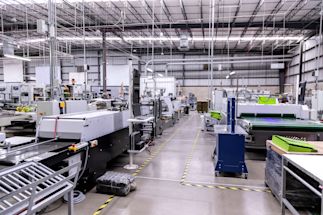As workforce shortages continue to pose challenges in manufacturing, more manufacturers are embarking on automation projects. To find out how to increase capacity and improve output without adding staff, we spoke with two experts from WMEP Manufacturing Solutions (WMEP).
Carol Crawford, Senior Consultant, has 25 years of experience, and Collin Wilson, Senior Consultant, has a wide range of manufacturing and automation expertise.
They shared their thoughts from working closely with manufacturers in all stages of the automation adoption and planning process in our podcast episode, “Investing in Manufacturing Automation.”
Approaching the Manufacturing Automation Process
You’ll most often have more success kicking things off in the planning stage at the organizational level. This high-level view will help you gain a comprehensive perspective on what you need to do, where to focus your first automation project, and where you might do more after that. Where is labor intensive and where can it be saved? What changes can have the biggest impact on the bottom line? By using methods like value-stream mapping, you can identify the greatest opportunities within your organization. From there, you can come back together and develop a plan.

Your plan should be forward-looking — not only should it extend at least a few years, but it should also include support and maintenance components to help keep new equipment in top-running shape.
A clear vision for where you’re trying to go is one of the biggest assets your manufacturing firm has when approaching automation. Building your plan around that vision simplifies the decision-making process and helps secure buy-in as you embark on what can be a challenging transitional period.
Who Should Be Involved in Manufacturing Automation?
It’s obvious that your leadership team will need to be involved — but manufacturing companies should consider broadening the scope for who is considered a stakeholder in automation projects. Automation has a lot of touchpoints, so it’s important to think through all of the different areas where technologies and processes intersect with people.

In terms of functional areas, be sure to invite your technicians into the conversation so they can share their perspective on how the changes impact them and raise issues you might not have considered. Remember, too, that not all changes will be on the shop floor. Sometimes it’s a business process that’s best automated — like invoicing clients or reviewing resumes.
Thinking vertically and horizontally across your organization will keep things moving smoothly and encourage employee engagement.
Driving Employee Engagement in Manufacturing Automation
Inviting employees into the process helps them take ownership over the transition, which leads to increased employee engagement. However, that doesn’t mean employees don’t have reasonable questions and anxiety about embracing automation. After all, the Organisation for Economic Co-operation and Development (OECD) predicts that 14% of jobs are likely to be automated and 32% partially automated in the near future. People, understandably, worry about their job security.
People, understandably, worry about their job security.
But the OECD also predicts a net increase of 58 million jobs resulting from automation. That’s because these technologies and automation processes free skilled workers to fill new and different roles.
The key here is to communicate the value of upskilling your workforce. While many employees don’t have direct experience with a particular task, they have an aptitude for learning that lets them drive their careers in ways they might not have expected. The modern manufacturing company is a very dynamic environment. Automation can serve as a springboard for redeployment into roles that employees would actually prefer over manual ones.
While you’re at it, be transparent about your goals and plans. Post them in shared spaces and take feedback as you go. This can demystify the process for skeptics and provide a roadmap to personal and professional growth for the (potentially untapped) leaders in your organization.
Plan Your Next Steps with Manufacturing Automation
With so much at play in automation and redeployment, manufacturing organizations have to be smart about how they approach the process. Experts recommend taking the time to develop a good strategy for handling the capital investment that turns your plans into reality.
Strong partnerships — from stakeholders to functional team members to financial institutions — will help you lay the foundation for a successful change management expedition. Make sure to reach out to us if our manufacturing industry experts at First Business Bank can connect you to other manufacturers to help you navigate the complexities of manufacturing automation at your business.





